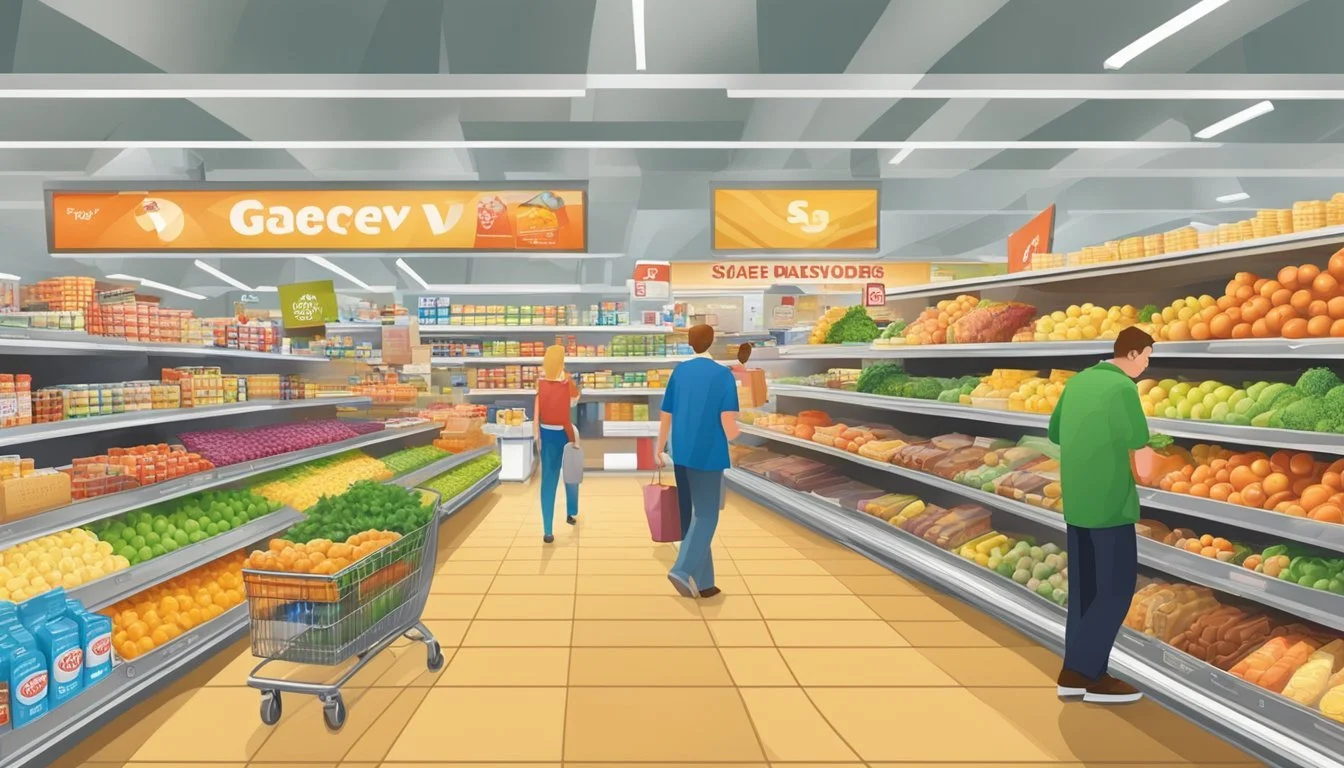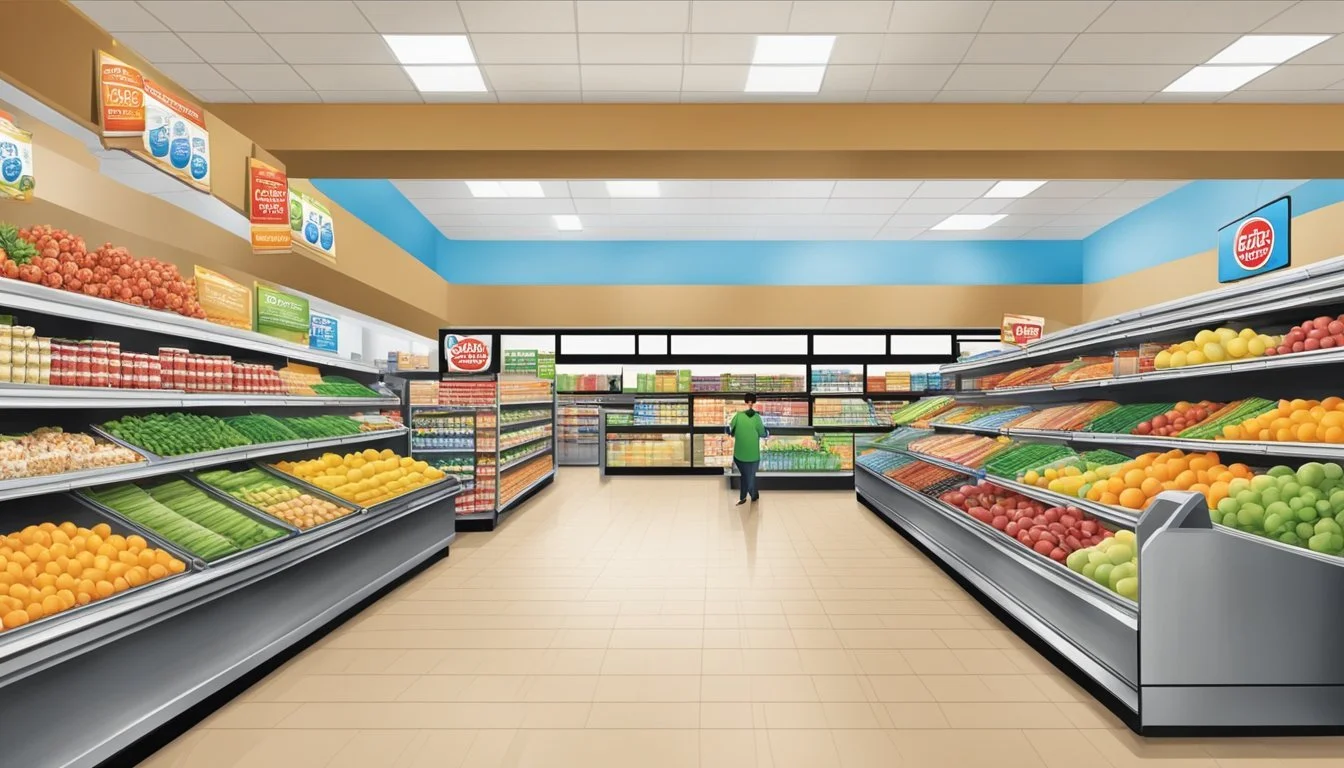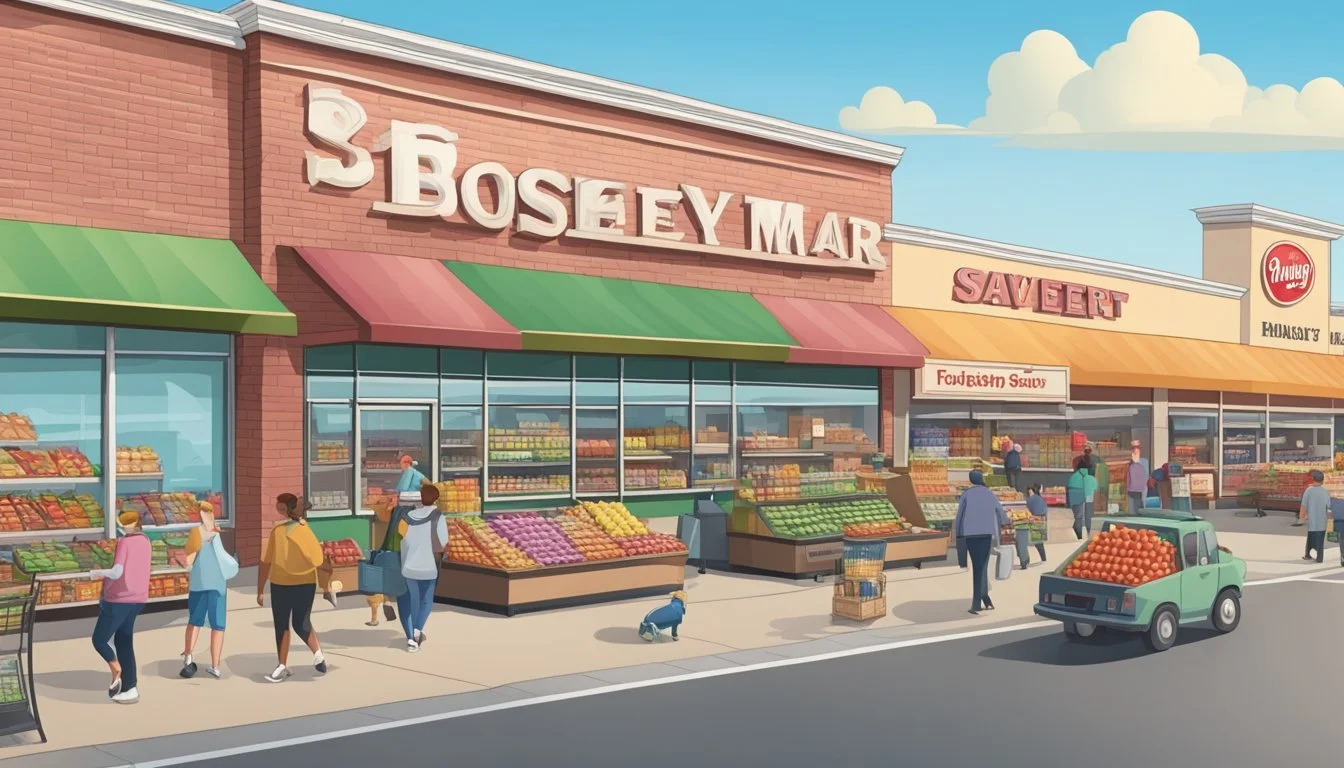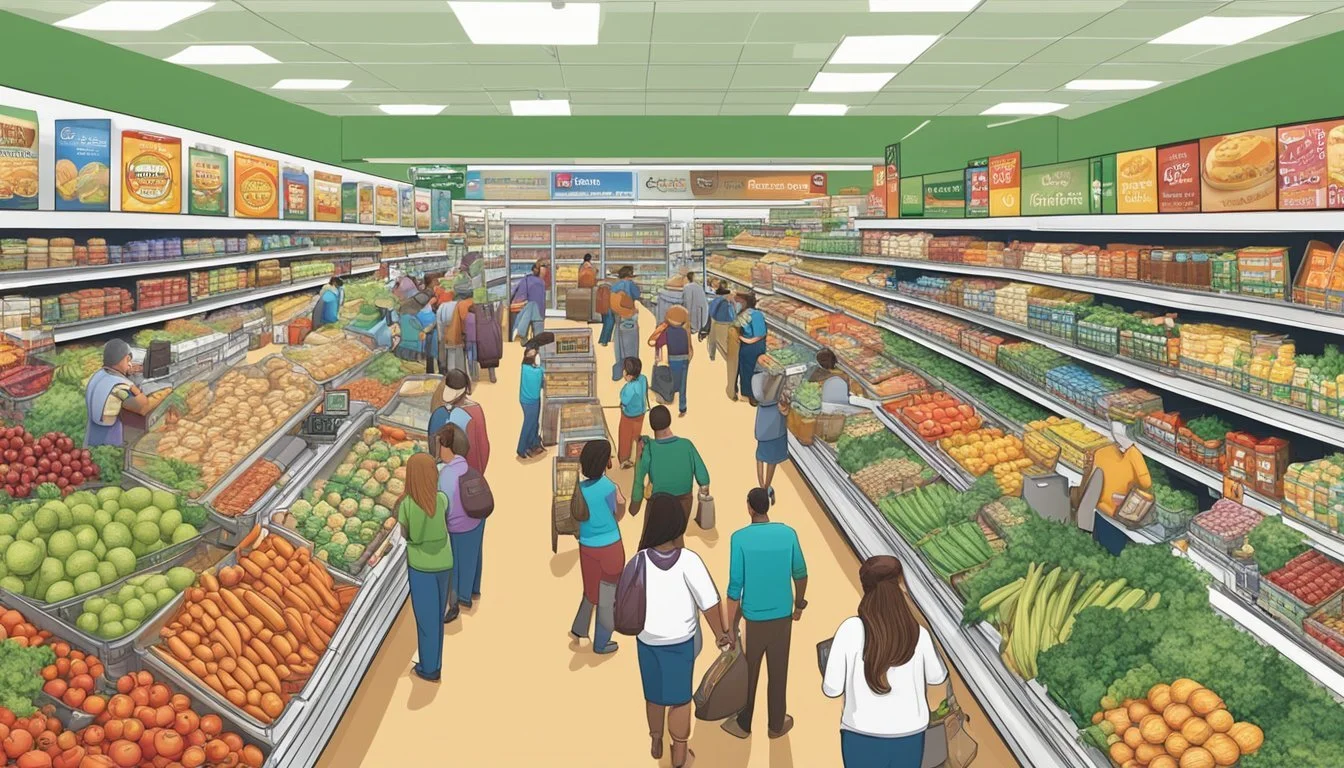Piggly Wiggly vs Save Mart
A Comprehensive Comparison of Prices, Selection, and Service
Piggly Wiggly and Save Mart are two distinct grocery chains with unique characteristics that appeal to different shoppers. Piggly Wiggly, founded in 1916, pioneered the self-service grocery store concept and maintains a strong presence in the Southern United States. Save Mart, established in 1952, operates primarily in California and Nevada, focusing on fresh produce and local products.
The choice between Piggly Wiggly and Save Mart depends largely on individual preferences and regional availability. Shoppers who value tradition and a more personalized experience may prefer Piggly Wiggly, while those seeking a wider selection of fresh produce and local goods might lean towards Save Mart. Both stores aim to provide quality products and competitive prices, catering to budget-conscious consumers.
Comparing these supermarkets involves considering factors such as product selection, pricing, store atmosphere, and customer service. Each chain has its strengths, with Piggly Wiggly often praised for its community involvement and Save Mart recognized for its emphasis on fresh, locally-sourced items. Ultimately, the better choice for grocery shopping will vary based on location and individual shopping priorities.
History and Legacy
Piggly Wiggly and Save Mart have both left significant marks on the grocery industry. Their origins and development showcase the evolution of American supermarkets and shopping habits.
The Origins of Piggly Wiggly
Clarence Saunders founded Piggly Wiggly in Memphis, Tennessee in 1916. This innovative store revolutionized grocery shopping by introducing the self-service concept. Customers could now browse aisles and select their own items, a radical departure from clerk-served models.
Piggly Wiggly pioneered many industry standards still used today:
Checkout stands
Price-marked items
Shopping baskets
Refrigerated cases
Saunders' vision extended beyond Piggly Wiggly. He later developed Keedoozle, an automated store concept, though it didn't achieve lasting success.
The Evolution of Save Mart
Save Mart's history began in 1952 when Nick Tocco and Mike Piccinini opened their first store in Modesto, California. The company grew steadily, adapting to changing consumer needs and market trends.
Key milestones in Save Mart's evolution:
1980s: Expansion into larger supermarket formats
1990s: Introduction of in-store pharmacies
2000s: Acquisition of other regional chains
Save Mart has maintained a focus on fresh produce and local sourcing, reflecting its Central Valley roots. The company's growth has made it a significant player in the California grocery market.
Store Brands and Product Selection
Piggly Wiggly and Save Mart offer distinct approaches to store brands and product selection. Both chains prioritize providing customers with a range of options, from private label items to national brands.
Comparing Store Brand Quality
Piggly Wiggly's store brand, "Food Club," covers a wide array of products. These items often match the quality of national brands at lower prices. Save Mart's private label, "Sun Harvest," focuses on natural and organic options. It provides health-conscious shoppers with affordable alternatives.
Food Club offers staples like canned goods, dairy, and frozen foods. Sun Harvest emphasizes fresh produce, snacks, and pantry items. Both brands undergo rigorous quality control to ensure customer satisfaction.
Taste tests have shown that many customers find it difficult to distinguish between store brands and national brands in blind comparisons. This speaks to the improving quality of private label products across both chains.
Variety and Range of Products
Piggly Wiggly stores typically stock a balanced mix of national and store brands. Their selection caters to local preferences, often featuring regional specialties. Save Mart, on the other hand, boasts a larger footprint and generally offers a more extensive product range.
Save Mart's fresh produce section is particularly notable, with a strong emphasis on locally sourced fruits and vegetables. Their meat department provides a diverse selection, including organic and grass-fed options. Piggly Wiggly's meat counters are known for their custom cuts and friendly service.
Both chains offer bakery and deli sections with freshly prepared items. Save Mart tends to have a more expansive selection of international foods and specialty items. Piggly Wiggly focuses on traditional favorites and comfort foods that resonate with their core customer base.
Price and Affordability
Piggly Wiggly and Save Mart employ different pricing strategies to attract and retain customers. Their approaches to everyday pricing and promotional offers can significantly impact shoppers' grocery bills.
Everyday Pricing Strategies
Piggly Wiggly often focuses on competitive pricing for staple items. Their store-brand products typically offer lower price points compared to national brands. Save Mart, in contrast, may have slightly higher everyday prices but emphasizes quality and selection.
Piggly Wiggly's pricing strategy aims to appeal to budget-conscious shoppers. They frequently use prominent price tags to highlight savings. Save Mart's pricing tends to be mid-range, balancing affordability with a more upscale shopping experience.
Both chains adjust prices based on local market conditions and competition. This dynamic pricing approach helps them remain competitive in different regions.
Discounts and Promotions
Piggly Wiggly is known for its weekly specials and digital coupons. They often run "buy one, get one" deals on popular items. Their loyalty program provides additional savings to regular customers.
Save Mart offers a mix of manufacturer coupons and store-specific discounts. They frequently feature seasonal promotions and multi-buy offers. Their loyalty program includes personalized deals based on shopping history.
Both stores use loss leaders - deeply discounted items to draw customers in. However, Piggly Wiggly tends to offer more frequent discounts on a wider range of products. Save Mart's promotions often focus on fresh produce and prepared foods.
Shopping Experience and Convenience
Piggly Wiggly and Save Mart offer distinct shopping experiences with varying levels of convenience. Both stores aim to provide efficient service and a pleasant environment for customers.
Layout and In-Store Navigation
Piggly Wiggly stores typically feature a compact layout, making it easy for shoppers to find items quickly. Aisles are often arranged by product category, with clear signage guiding customers.
Save Mart, on the other hand, tends to have larger stores with wider aisles. This can provide a more spacious feel but may require more walking to locate specific products.
Both chains offer shopping baskets and carts for customer convenience. Save Mart usually provides a greater variety of cart sizes to accommodate different shopping needs.
Checkout Efficiency
Piggly Wiggly focuses on traditional checkout stands staffed by clerks. Lines are generally short due to the smaller store size and customer base.
Save Mart employs a mix of staffed checkouts and self-checkout kiosks. This variety can help reduce wait times during busy periods. The self-checkout option appeals to customers who prefer a quicker, more independent experience.
Customer Service and Support
Piggly Wiggly prides itself on personalized customer service. Staff members often know regular customers by name, creating a friendly, small-town atmosphere.
Save Mart offers a more standardized approach to customer service. Employees are trained to be helpful and courteous, but the larger store size may result in less personalized interactions.
Both stores typically have customer service desks for returns, exchanges, and special requests. Save Mart often provides additional services like pharmacy consultations and floral arrangements, enhancing the overall shopping experience.
Consumer Satisfaction and Loyalty
Piggly Wiggly and Save Mart both strive to maintain customer loyalty through different approaches. Their success in this area can be measured through customer reviews, ratings, and the overall trust in their brand.
Customer Reviews and Ratings
Piggly Wiggly receives mixed reviews from shoppers. Some customers appreciate the store's local feel and personalized service. Others cite concerns about product variety and store cleanliness.
Save Mart generally garners positive feedback for its product selection and store layout. Customers often praise the fresh produce department and competitive pricing.
Both chains have room for improvement in certain areas. Piggly Wiggly could enhance its inventory management, while Save Mart might focus on reducing checkout wait times.
Consumer Reports surveys indicate that regional chains like these often outperform national competitors in customer satisfaction.
Brand Trust and Reputation
Piggly Wiggly's long history as America's first self-service grocery store contributes to its brand recognition. Many shoppers, especially in the Southern United States, feel a sense of nostalgia and loyalty towards the chain.
Save Mart has built a strong reputation in the Western states. The company's commitment to supporting local farmers and communities resonates with many customers.
Both stores face challenges from larger national chains and online grocery options. To maintain customer loyalty, they focus on personalized service and community involvement.
Surveys show that consumers often prefer familiar local brands when it comes to grocery shopping. This preference can give both Piggly Wiggly and Save Mart an edge in their respective markets.
Corporate Responsibility and Community Involvement
Piggly Wiggly and Save Mart demonstrate their commitment to corporate responsibility and community involvement through various initiatives. Both chains prioritize sustainability efforts and engage with local communities to create positive impacts.
Sustainability and Local Sourcing
Piggly Wiggly emphasizes locally-sourced products in many of its stores, supporting regional farmers and producers. This approach reduces transportation costs and environmental impact while providing customers with fresh, seasonal options.
Save Mart has implemented energy-efficient technologies in its stores, including LED lighting and improved refrigeration systems. The chain also focuses on reducing food waste through partnerships with local food banks and composting programs.
Both retailers offer organic produce sections, catering to environmentally conscious consumers. They work with suppliers to ensure sustainable packaging options and promote reusable bags at checkout.
Community Engagement and Support
Piggly Wiggly stores, particularly in the Midwest and South, actively participate in community events and fundraisers. They often sponsor local sports teams and school programs, fostering strong ties with their neighborhoods.
Save Mart operates a charitable foundation that supports education, hunger relief, and health initiatives in its operating areas. The chain regularly hosts food drives and partners with local non-profits to address community needs.
Both retailers create job opportunities for local residents and provide training programs for employees. They also offer customer loyalty programs that give back to the community through donations or discounts on local products.
Comparative Analysis with Industry Competitors
Piggly Wiggly and Save Mart face stiff competition from major national and regional grocery chains. Both stores have distinct strengths and weaknesses when compared to larger competitors.
Piggly Wiggly vs Major Grocery Stores
Piggly Wiggly stands out for its customer loyalty and cost-plus pricing model in certain regions. This approach helps them compete with giants like Walmart on price. Piggly Wiggly stores tend to be smaller than many national chains, offering a more intimate shopping experience.
In product variety, Piggly Wiggly lags behind expansive retailers like Kroger or Safeway. However, they often stock local products that larger chains may not carry. Piggly Wiggly's fresh produce and meat selections are generally competitive with other grocers.
Piggly Wiggly's store count is much lower than major competitors, limiting its geographic reach. This can make it less convenient for some shoppers compared to ubiquitous chains like Walmart or Kroger.
Save Mart Compared to Other Supermarkets
Save Mart competes primarily in California and Nevada markets. Its strongest regional competitors include Safeway, Raley's, and Lucky. Save Mart positions itself as a mid-range grocer, offering competitive prices without sacrificing quality.
Save Mart's produce department is often highlighted as a strength, competing well with specialty grocers like Sprouts or Whole Foods in this area. The chain also emphasizes its meat and seafood offerings.
In terms of store experience, Save Mart falls between no-frills discounters like WinCo and upscale markets like Whole Foods. Their stores are typically clean and well-organized, though not as lavish as some high-end competitors.
Save Mart's private label products help it compete on price with larger chains. However, its overall selection may be more limited than mega-retailers like Walmart or Target.
Franchise Model and Business Expansion
Piggly Wiggly and Save Mart employ different strategies for growth and market presence. Piggly Wiggly operates through a franchise model, while Save Mart focuses on acquisitions and regional expansion.
Piggly Wiggly Franchise Opportunities
Piggly Wiggly offers franchise opportunities to independent grocery store owners. The investment range for a Piggly Wiggly franchise is $1.4 million to $4.9 million. This includes costs for equipment, signage, and initial inventory.
Franchisees benefit from Piggly Wiggly's established brand recognition and support systems. The company provides operational guidance, marketing assistance, and purchasing power advantages.
Piggly Wiggly stores are primarily located in the Southeast, with some presence extending as far north as Wisconsin. This franchise model allows for localized management while maintaining brand consistency.
Save Mart's Growth and Acquisition Strategy
Save Mart Supermarkets has expanded through strategic acquisitions and organic growth. The company focuses on strengthening its presence in California and Nevada.
Save Mart has acquired regional chains to broaden its market reach. These acquisitions allow Save Mart to enter new territories and increase its store count rapidly.
The company operates under multiple banners, including Save Mart, Lucky, and FoodMaxx. This multi-brand approach enables Save Mart to cater to different customer segments and market needs.
Save Mart emphasizes modernizing existing stores and opening new locations in growing communities. This strategy helps maintain relevance in competitive markets.
Final Assessment
Piggly Wiggly and Save Mart each offer distinct shopping experiences. Piggly Wiggly, known for its historical significance, typically provides a more personalized atmosphere in its stores. Save Mart, while less steeped in tradition, often focuses on modernization and efficiency.
In terms of quality, both chains maintain acceptable standards for their products. However, Save Mart may have an edge in fresh produce selection due to its California roots and connections to local farmers.
Price-wise, Piggly Wiggly often competes well in local markets, especially with its store brands. Save Mart's pricing strategy can vary by location but generally remains competitive.
Customer satisfaction tends to be high for both retailers, with loyal customer bases. Piggly Wiggly often excels in community engagement, while Save Mart may score higher on product variety.
Store cleanliness is typically well-maintained in both chains, though individual store experiences may vary. Save Mart's newer store designs might present a more polished appearance in some locations.
Promotions and loyalty programs are utilized by both retailers. Piggly Wiggly often tailors deals to local preferences, while Save Mart may offer more technologically integrated savings options.
The choice between Piggly Wiggly and Save Mart ultimately depends on individual shopper priorities and local store quality. Factors like location convenience, specific product availability, and personal shopping preferences will influence which store better suits a customer's needs.








